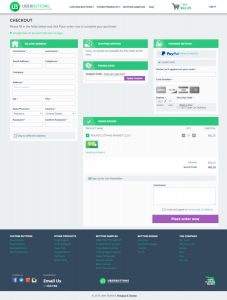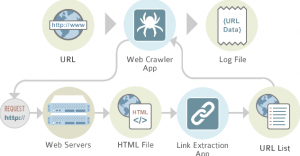Blogging isn’t going out of style any time soon; with the ascent of content marketing, blogging, podcasting and video are on the minds of marketers and PR professionals all the time. In this 10-part Beginner’s Guide to Blogging series, we’re going to explore what makes a blog great and give you some structures and frameworks to help make blogging easier. Take from it what works and leave behind what doesn’t work!
In Media Res
In media res: Latin for in the middle of things. This is a literary device which starts a narrative in the middle of the story, at a critical, action-packed part of the story. It’s one of the oldest literary devices, dating back to ancient Greek and Homer’s Odyssey, used by Shakespeare in his works (especially Hamlet), and is a staple of modern fiction.
Let’s back up a bit. Blogging is very much a narrative art. Blogging is storytelling, whether you’re posting content on your company’s website, on services like Quartz and Medium, whether you’re using written words, video, or audio. Blogging is about telling a compelling narrative, something that educates or entertains.
Sometimes, a narrative can effectively be told from beginning to end in a linear fashion. Other times, however, starting in the middle of the story is an effective way to capture attention and stimulate curiosity. In today’s fast-paced social and digital environment, you need every possible attention-getter in your toolbox.
Example
In media res tends to follow a pattern of start in the middle, flashback, current time. The flashbacks can be done in one chunk of content (especially for shorter form content like blog posts), or can be distributed throughout the narrative to provide relevant background as situations occur in the story.
For example, suppose you were telling the narrative of how a new enterprise software platform was rolled out.
- You might begin at the first test of the new system, as the new servers come online or the first email invitations go out.
- Flash back to the struggles that employees had under the old system. You’d tell the tale of lost messages, complaints to tech support, perhaps even a lost major sale or customer.
- Flash to the present day, where the system is being adopted by users, and initial positive feedback. Write of user satisfaction, happiness that a particularly troublesome woe was gone.
- Flash back to the critical internal meeting where pros and cons of switching systems was heavily debated.
- Flash forward to the final phases of rollout, in which everyone is happy and the new system is working well.
Telling the story of an enterprise software rollout using in media res can help to increase interest when a narrative told linearly might not be as compelling. Try it when you’ve got a story in which the narrative follows an entirely predictable, highly linear, not necessarily exciting tale to add a new twist.
In the final part in this series, we’ll look at some foolproof ways to generate blog post topics and ideas that will help you fill up your editorial calendar.
Digital & Social Articles on Business 2 Community
(99)
Report Post









